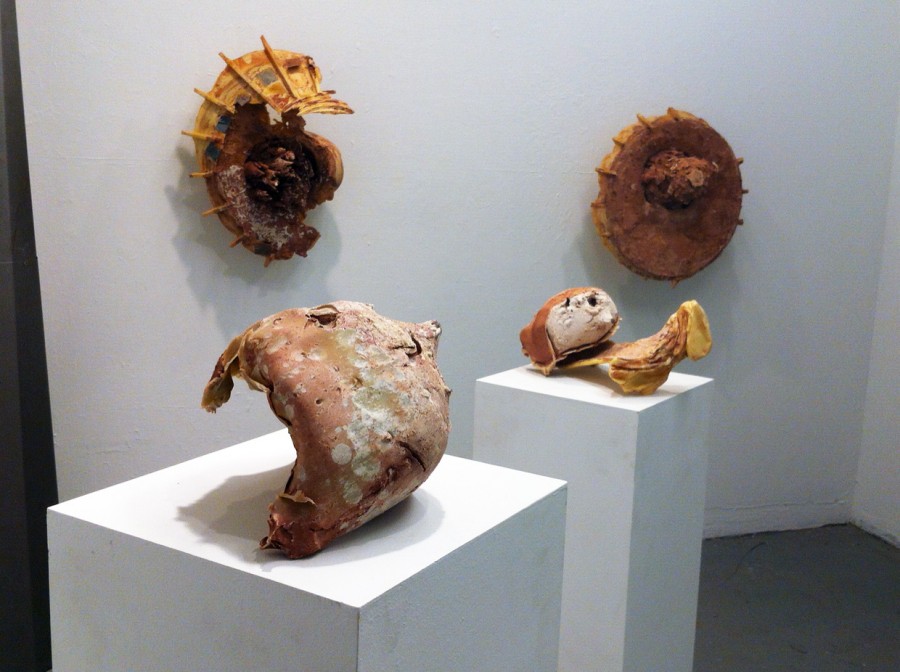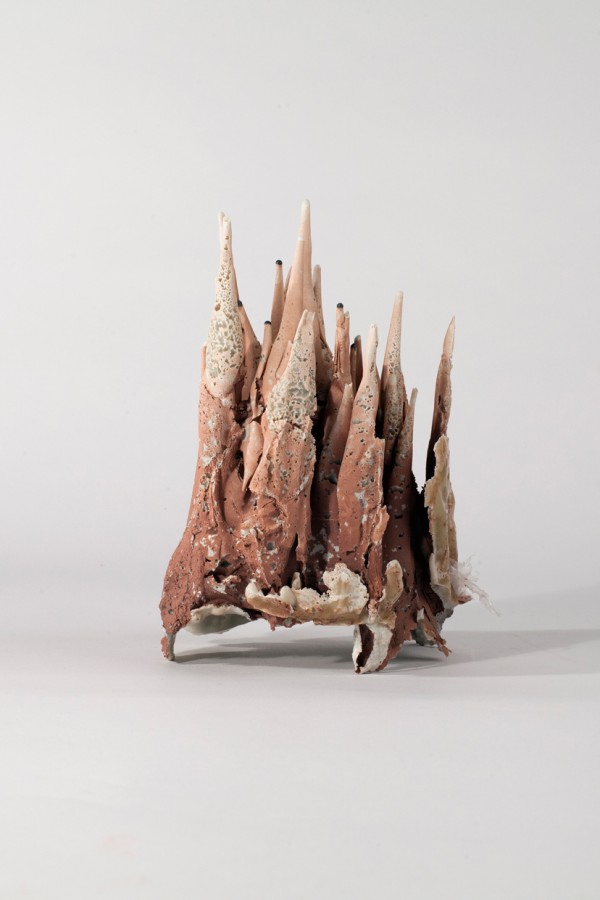Cast Gunshots, 2015-16
Following the Cast Gunshots, 2015, I cast shotgun shots, rifle shots and black powder musket shots. Each had their own particular appearance. What I was not prepared for was how the socio-political element of shooting came to dominate the reading of the works. While I am certainly aware of the function of weapons, I was still very much interested in the transposition of sound, time and motion into other forms, which had been the defining element in works as far back as the Clock Drawings, 2009-10. Finding a way to have the socio-political combine with the transformatory elements in a productive manner became the challenge. This led to accompanying some of the cast forms with video of me shooting and in the case of The Death of General Wolfe, 2016, referencing a historical event.
Below are a number of images of the aforementioned series.

A varitey cast from shotgun shots and varmit rifles. The two on the plinth are created by shooting blocks of clay with .222 varmit rounds. On the wall are casts of 410 shotgun blasts. Within these casts are the shape of the form that held the clay itself.

.50 Calibre SST Hornady Round Fired with Black Powder at 20’, from the Cast Rifle Shot Series, 2016, 30 x 6.5 x 8.25”

410 Shotgun Blast, 2015, Resin, clay and shot